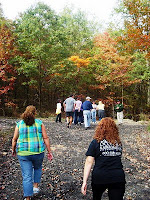There may not be a cure for the cold or flu, but there are ways you can reduce the risk that you or your children may get sick. The Family Health Guide offered these tips on Parenting.com.
Keeping Germs Away: Teach your kids to cover the mouth and nose with their armpit, rather than their hand, if they cough or sneeze. Viruses that cause colds and flu are usually transferred from one’s hand to the nose or mouth. Get them in the habit of washing their hands before eating, after using the bathroom, sneezing or coughing, and after they come home from school.
Boost Your Child’s Immune System: Kids can get an immunity boost from eating well, staying active, and getting enough sleep. Dark colored foods have plenty of phytonutrients (called “phytos”) that include immune-boosting power. A multi-vitamin with a vitamin D supplement for kids up to age 18 will do the trick or those kids who won’t touch fruits and vegetables.
 Pennsylvania Injury Attorneys Blog
Pennsylvania Injury Attorneys Blog
















